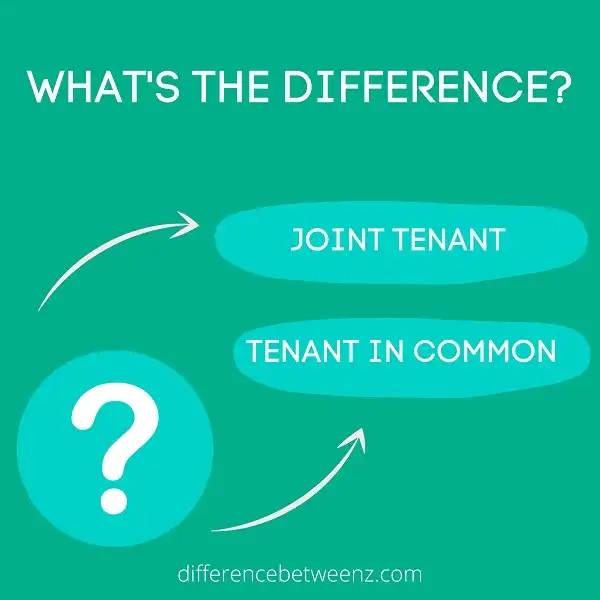When it comes to renting out a property, there are two types of co-ownership: joint tenants and tenants in common. Both have their own benefits and drawbacks, so it’s important to understand the difference before making a decision. In this blog post, we’ll break down the key differences between these two types of ownership. We’ll also help you decide which option is best for you and your situation. So read on to learn more!
What is a Joint Tenant?
Joint tenancy is a type of co-ownership of property in which each person owns an undivided interest in the property, together with the right of survivorship. This means that, upon the death of one joint tenant, the surviving joint tenant(s) will inherit the deceased tenant’s interest in the property. Joint tenancy is often used by married couples or business partners as a way to ensure that their co-ownership interests will not be divided if one of them dies. In order to create a joint tenancy, all joint tenants must have an equal and undivided interest in the property, and they must acquire their interests at the same time and from the same source. Joint tenancy can be created by deed, will, or operation of law.
What is Tenant In Common?
Tenant In Common (TIC) is a type of co-ownership where each party owns a share of the property. The key difference between TIC and other types of co-ownership is that TIC owners can sell or transfer their interest in the property without the consent of the other owners. Tenants In Common can also have different shares of ownership, which can be freehold or leasehold. This type of co-ownership is popular among investors as it offers greater flexibility and control than other types of ownership. Tenants In Common can hold property jointly with other individuals or entities, such as companies or trusts. If you are considering TIC ownership, it is important to seek legal advice to ensure that the property is held correctly and that your rights are protected.
Difference between Joint Tenants and Tenants In Common
Joint tenants and tenants in common are different ways for two or more people to own a property. Joint tenants mean that each person owns an undivided interest in the property and that upon the death of one joint tenant, the other tenant automatically owns the property. Tenants in common means that each person owns a specific percentage of the property and that their interest in the property can be passed down to others through their will. Joint tenants have the right of survivorship, meaning that if one tenant dies, the other tenant(s) inherit their interest in the property. Tenants in common do not have this right, meaning that if one tenant dies, their interest in the property is inherited by whoever they have designated in their will. Joint tenants require all owners to sign any documents relating to the property, while tenants in common only require a majority of owners to sign. Both types of ownership have their advantages and disadvantages, so it is important to consult with an attorney or real estate agent to determine which type of ownership is best for you.
Conclusion
So, what is the difference between joint tenants and tenants in common? Joint tenancy means that when one tenant dies, the other tenant or tenants inherit the property. With a tenancy in common, each tenant owns an undivided interest in the property and can sell their share to someone else if they choose. If you are looking for a way to avoid probate court, joint tenancy is a good option. However, if you want more flexibility with your property ownership, then consider a tenancy in common instead.


